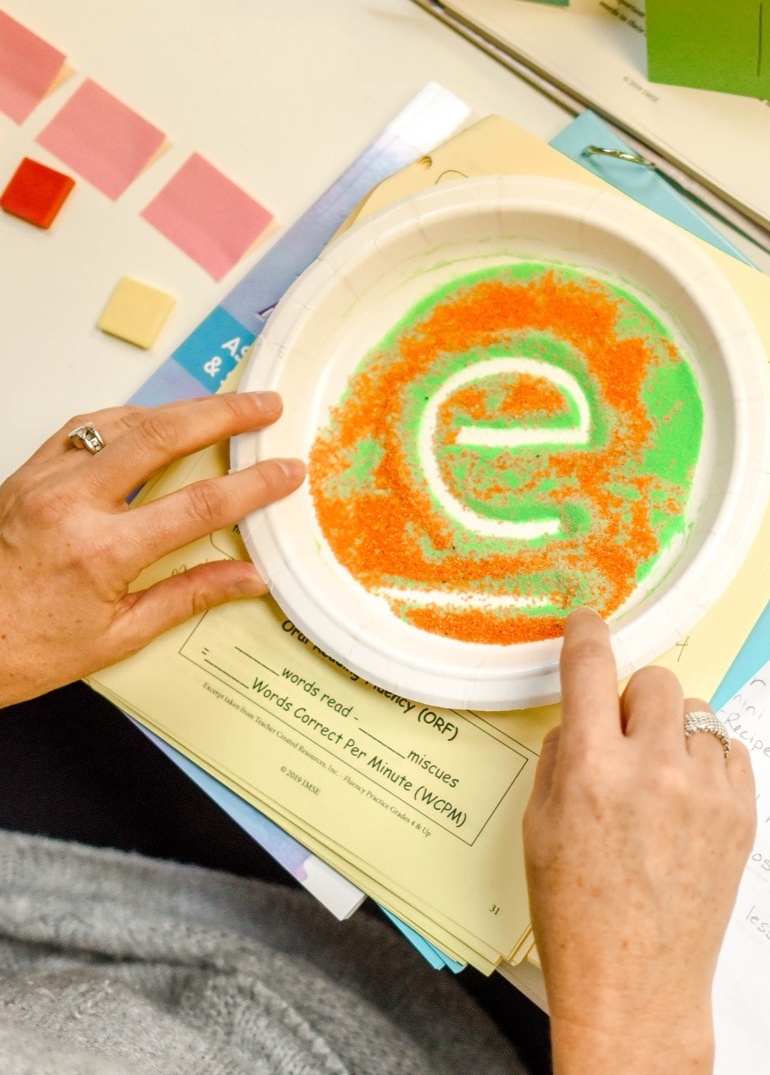
How We Approach Dyslexia

If you're a parent of a child struggling with dyslexia, you're well aware of the unique challenges this learning disability presents. Dyslexia affects a child's ability to read, write, and spell, making everyday academic tasks feel like insurmountable obstacles. However, there's hope on the horizon in the form of a specialized approach called the Orton-Gillingham intervention. Let's look at what dyslexia is, how the Orton-Gillingham approach can make a significant difference, and how you can support your child on their journey to literacy.
What is Dyslexia?
Dyslexia is characterized by specific cognitive deficits primarily related to reading and language processing. Individuals with dyslexia struggle with phonological processing, which involves recognizing and manipulating the sounds of spoken language. They often find it challenging to connect the sounds of words to their corresponding written symbols, which leads to difficulties in accurate and fluent reading and spelling.
Additionally, dyslexia can impair the automatic recognition of common words, making reading a laborious task, and it may affect the ability to decode unfamiliar words. These cognitive deficits in dyslexia are not indicative of lower intelligence but rather reflect a specific difficulty in acquiring and applying key literacy skills.
Watch this video to understand how the dyslexic brain works!
The impact of dyslexia extends beyond the classroom; it can affect a child's self-esteem, emotional well-being, and future career prospects. However, with the right intervention, individuals with dyslexia can develop essential reading and writing skills, build confidence, and achieve their full potential.
What is Orton-Gillingham?
The Orton-Gillingham approach is a time-tested, structured, and multi-sensory method for teaching individuals with dyslexia how to read and write effectively. It was developed in the early 20th century by Dr. Samuel Orton and educator Anna Gillingham and has since been refined and adapted to suit modern educational settings.
Here's why the Orton-Gillingham intervention is such a powerful tool in addressing dyslexia:
- Multi-Sensory Approach: Orton-Gillingham engages multiple senses in the learning process. Students see, hear, speak, and write words and sounds, creating strong neural pathways that improve reading and spelling.
- Individualized Instruction: Orton-Gillingham is personalized to each student's needs. It recognizes that no two individuals with dyslexia are alike and tailors instruction to their unique strengths and challenges.
- Phonics-Centric: The approach focuses heavily on phonics, teaching students how to recognize and manipulate sounds in words. This foundational skill is crucial for reading success.
- Systematic and Cumulative: Orton-Gillingham is a step-by-step approach that builds on previous knowledge. This incremental progression ensures that students master each skill before moving on to the next.
- Visual and Tactile Strategies: The use of visual and tactile strategies aids in memory retention and reinforces reading and writing skills.

Click here for more Information on Orton-Gillingham
Supporting Your Child's Orton-Gillingham Journey
Dyslexia can be challenging, but with the Orton-Gillingham intervention and your unwavering support, your child can overcome these obstacles and achieve their full potential. Remember, dyslexia does not define your child; it's just one aspect of who they are. Embrace the journey, celebrate every milestone, and watch as your child's literacy skills flourish. With the Orton-Gillingham approach, there's light at the end of the tunnel, and your child can become a confident and capable reader and writer.
- Early Diagnosis: If you suspect your child has dyslexia, seek professional evaluation as early as possible. Early intervention is key to successful outcomes.
- Find a Qualified Tutor: Look for a trained Orton-Gillingham tutor or educator who can provide one-on-one instruction tailored to your child's needs.
- Consistency and Patience: Dyslexia can be a lifelong challenge, but with consistent support and patience, your child can make significant progress.
- Encourage a Love of Reading: Read together as a family, explore audiobooks, and make reading a positive experience for your child.
- Collaborate with Educators: Communicate with your child's school and teachers to ensure they are aware of your child's needs and can offer appropriate accommodations.